Going into the this version of the Christoph Hess travelling masterclass, I must confess I was wondering if I would find anything new to write about, but relax, the guy is an endless fount of knowledge and insights, and thanks to clever programming by the organisers, it was a hit with all the crowd…
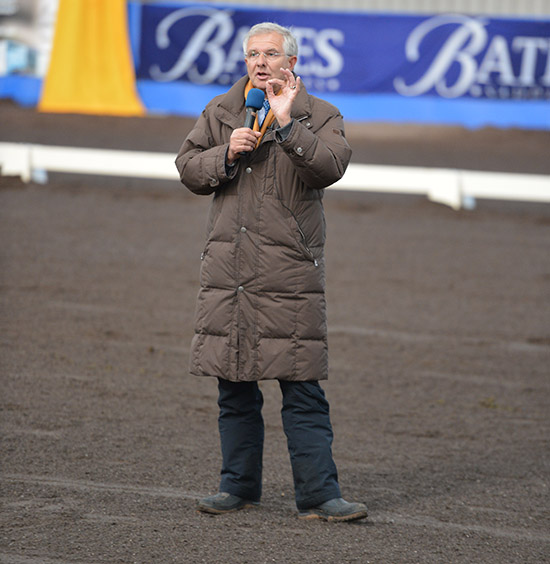
Christoph Hess is about the most enthusiastic person I have ever met, and he was delighted that event director, Ute Raabe, had provided him with some different horse/rider combinations: Natasha Althoff-Kelly and her Friesian stallion, Ebony Park Abe, and Worldwide PB and Megan Jones with Kirby Park Impress, and Joann Formosa and Worldwide PB, read her story here: http://www.horsemagazine.com/thm/2014/11/christoph-hess-meets-joann-formosa/.
“It is exciting for me to work with very different riders and very different horses. When we school, we don’t school to teach tricks, we school to reach the full potential of the horse. I like it in Australia, I work with riders with so many different breeds of horses – in Germany the horses are all Warmbloods. Here each horse is a challenge for each rider: Friesians, Connemaras, Lusitanos, Andalusians, Stock horses… In Australia you have to find the special key to school this particular horse.”
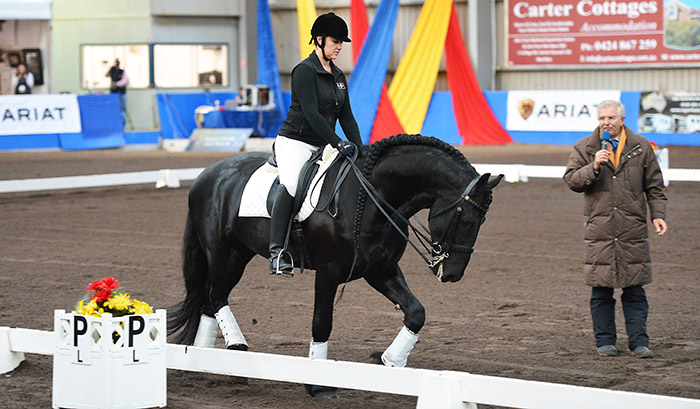
And the first customers – Natasha and Abe – were already in the indoor, breezing around on a long rein.
“I am happy to see this horse on a longer rein. Why? Because of the nature of the horse – look to the horse in the field, there are no short necks… Why? Because the horse needs his neck to balance his body. It is important in the whole training session to stretch the horse, especially this type of horse, sometimes they can get very short in the neck. Once we get the horse to stretch the next step is to get the horse stretching in the direction of the bit.”
“When I look at the transition to canter there is not enough canter behind, you have to have the feeling that the horse starts to canter from behind. You have to be careful to ride more with a forward tendency because these horses are often very near to a four beat in the canter. You should work on a proper transition to canter with enough from behind – try a little shoulder-in position and use your inside leg to get more forward tendency, so he moves from behind.”
“Natasha look around, when you look down you can’t work properly with your upper body. When you look downhill, you sit to one side.”
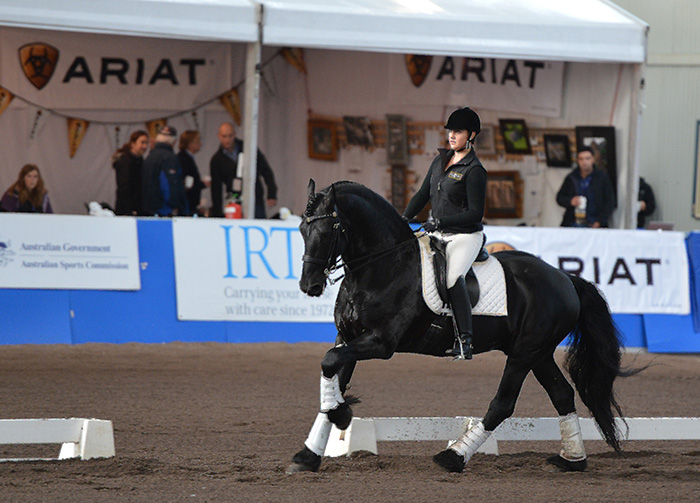
“Next transition to trot, and remember, you don’t finish the canter, you ride with driving aids into the trot – otherwise you are riding with your hands which is against the nature of the horse.”
“Let us try it again. Canter a circle. Give both reins and start to trot. Never use the reins to go from canter to trot.”
Abe found this concept a little difficult to get, but still Christoph liked the big black horse and his rider: “Often Friesians are a little cold blooded, this is a lovely horse that wants to work, and I like the rider, she laughs, you have to laugh and have an open, good, swinging feeling.”
“When you ride a transition the secret is to have a little shoulder-in tendency, and use the inside leg, and the horse starts to trot. Most riders ride the transition with their hands and this shortens the horse, and the horse loses its balance and falls on the forehand. It is totally ridiculous when the rules say that you can ride a horse for ten minutes in rollkur in the warm up, this is totally against classical riding.”
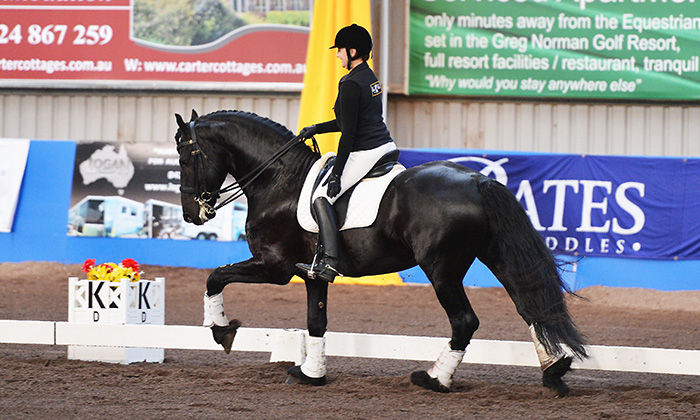
“With a Grand Prix horse, you don’t have to ride 15 one-times changes, work on these small things and the others will come. In canter, put both your reins in one hand and see how much better the outline is – now give both reins and trot.”
“What does the rider do in the transitions?”
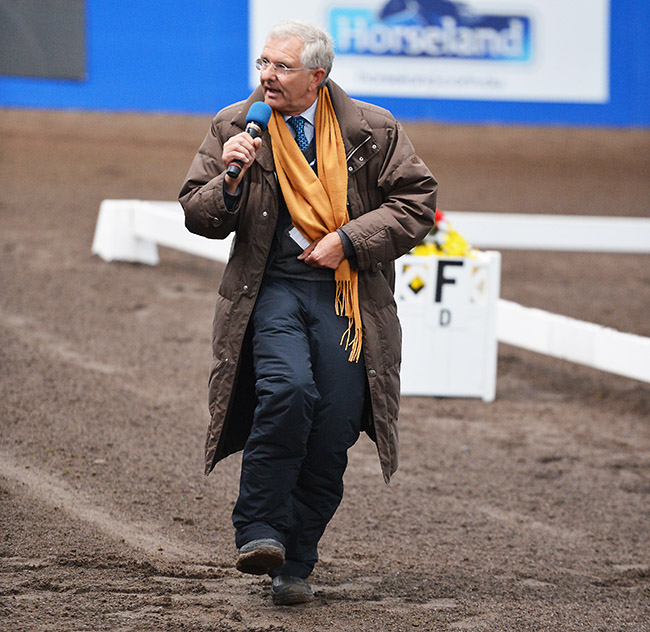
“You have to bring the belly button in to the back, and then in the same moment you bring up the toes! Toes up, because then from the biomechanic point of view you have exactly the right rotation in your body, so you explain to the horse, oh come back, and then the horse is sitting more on his hindlegs and then the horse comes back. And if you do this properly, if you do this every time you make a transition, and if you do this without using your reins, or if you use the reins very, very soft, your horse will learn to respond.”
“And if you do this a little bit with the shoulder-in feeling, shoulder-fore feeling, so you use enough the inside leg against the outside rein, the diagonal aids, when you do this you make a transition in a perfect way.”
Poor Natasha, she was going to have to ride pretty well every movement, without her reins. In the half pass it was, “give both reins away, give both reins away, give both reins away, even in half pass so the horse finds his own balance.”
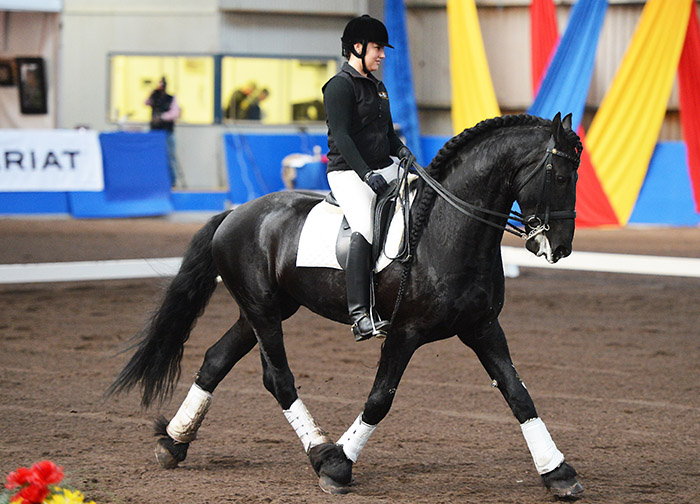
The black stallion was not really listening to Natasha’s inside leg in the half pass, so Christoph had her riding half pass / shoulder-in / half pass / shoulder-in, and to make that more interesting, to ride with the reins in one hand. Letting Natasha get the feel of using less rein, and not making the stallion shorter and shorter in the neck.
“I always want to think that in any situation the rider is able to give and re-take the reins. Piaffe, passage, flying changes, transitions – if I get the feeling that the rider can give away the rein, then I can give a 10, if the rider can’t, then a 0.”
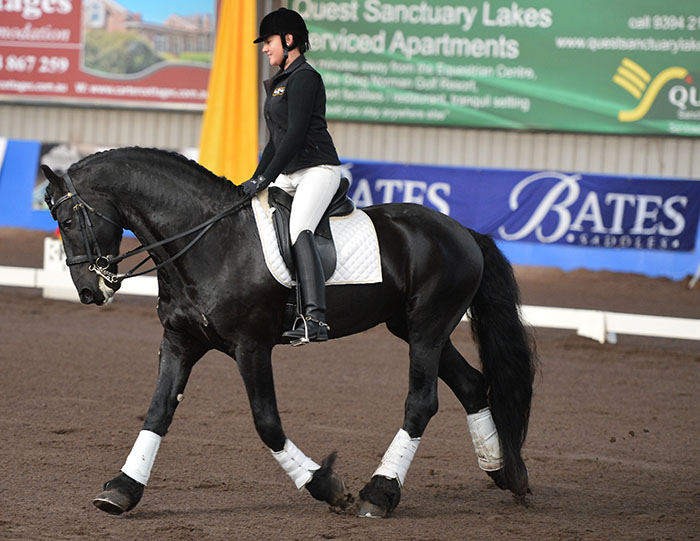
“Is the rider able to ride the whole test with one hand? 10! Unable, 0. Able to ride the whole test with the horse stretched? 10, unable, 0. It is important to love dressage, to smile in the saddle like this rider does.”
next Christoph works on straightness with an eventer, and some unusual obstacles…
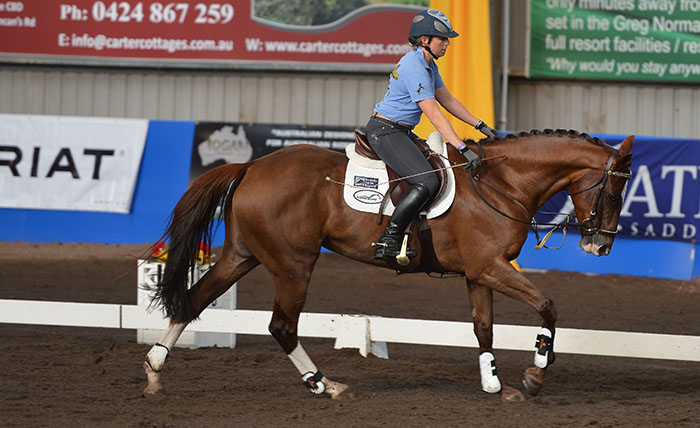
And the new horse and rider combination were nicely chosen to continue the theme – Megan Jones and her home-bred Kirby Park Impress, by the Jones family’s stallion, Nantamboo, out of a Thoroughbred mare:
“Once again, harmony, once again, the rider is schooling for trust – the horse knows ‘the rider is my partner’.
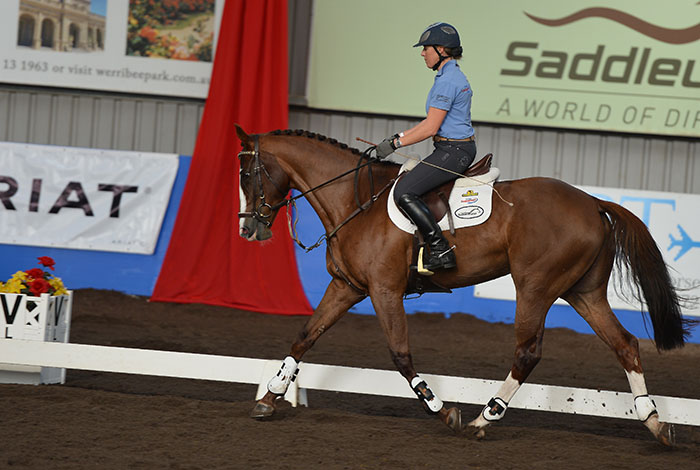
The first goal with this young eventing horse is the same as the goal with the Grand Prix horse: STRETCH. This gives the horse a good body feeling, swing, use the body, and then we see the active hind legs.”
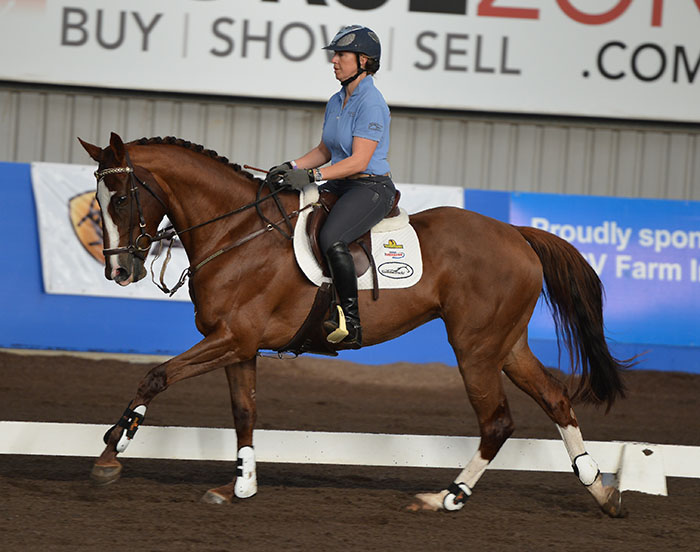
Rightly, Christoph is impressed with Megan’s riding: “Look to her hands. She does NOTHING with her hands. And see she moves to the half seat – the half seat in the canter is like rising trot in the trot. It is like saying thank you to your horse. Megan is the spirit of good riding, she is a very sensitive rider.”
Christoph has Megan riding some canter serpentines on a long rein: “Here we let the horse find her own balance, now let us see her jump.”
next Megan jumps some unusual cross country fences…
And Megan keeps that same sweet connection, that same forward flow, never interfering with the mare: “Watch, Megan is waiting for the fence to come, she is letting the horse watch – she doesn’t help the horse, she puts the reins away. It is like free jumping and it is very important schooling for a young horse.”
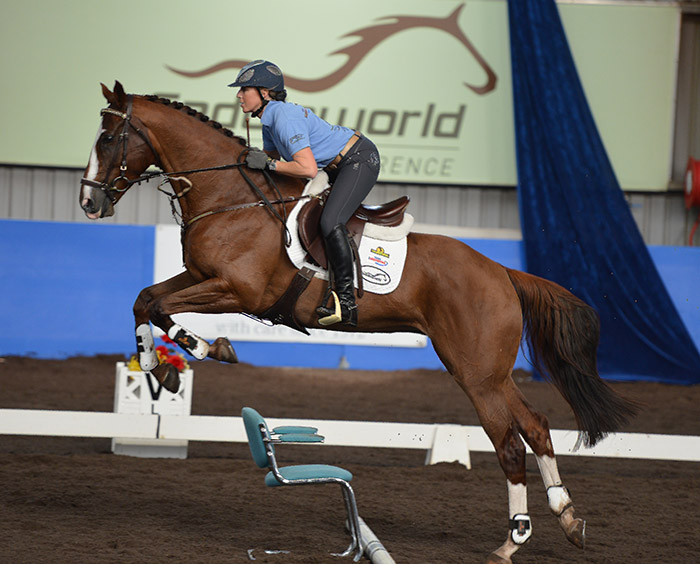
Chair…
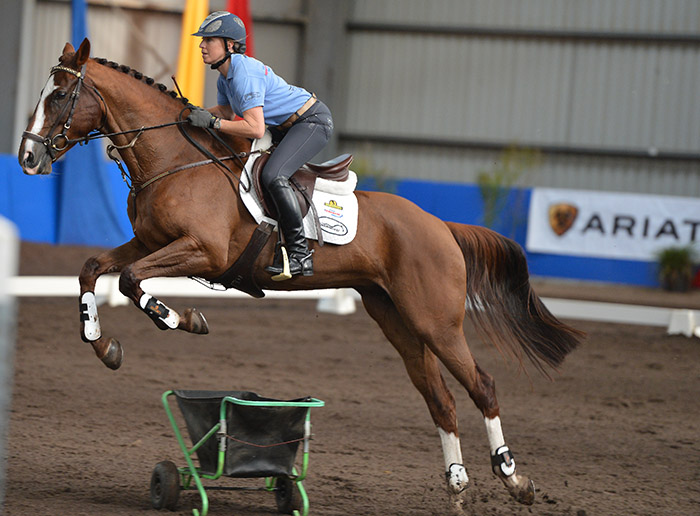
a wheelbarrow
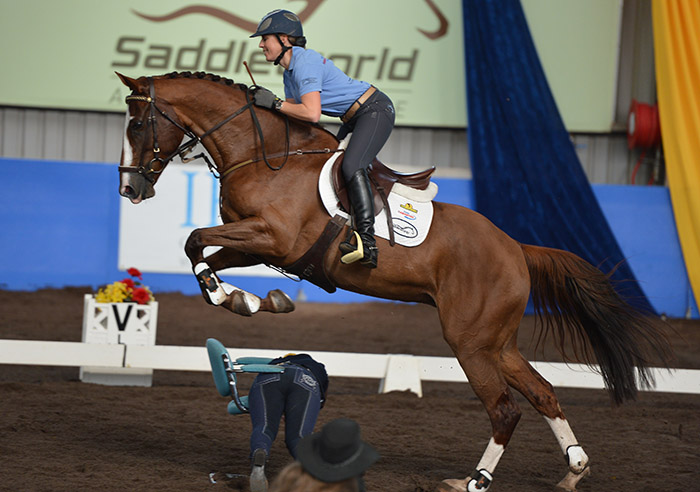
one of the brave ladies
And just to show that this really is a trusting, confident combination, Megan and Impress jump a series of frightening objects: a chair, a wheelbarrow, three brave ladies from the audience and finally, her husband, James.
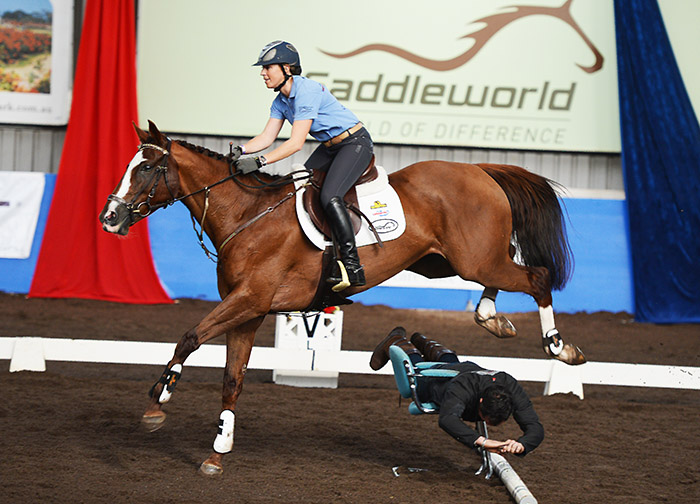
and lastly, James
After checking with show director, Ute Raabe, that the insurance is in place, Christoph congratulates Megan on her performance: “See it works when you school a horse in the right direction. ZUPER!”
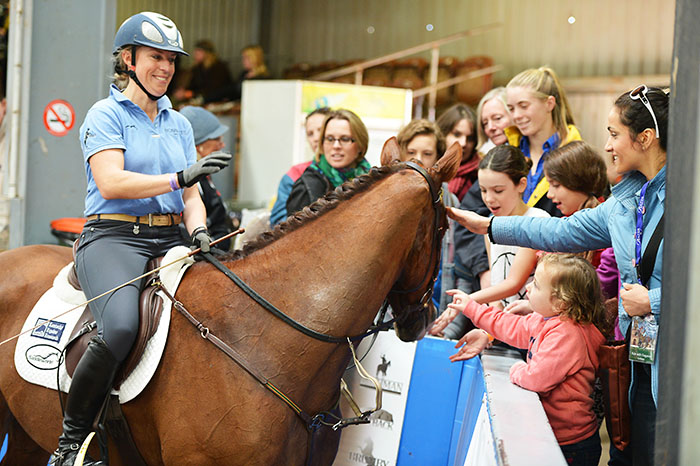
And so say all of us, as the big crowd roars its appreciation.



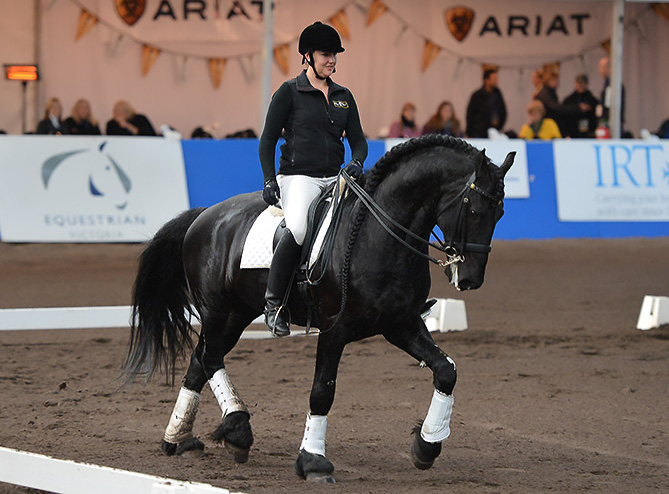
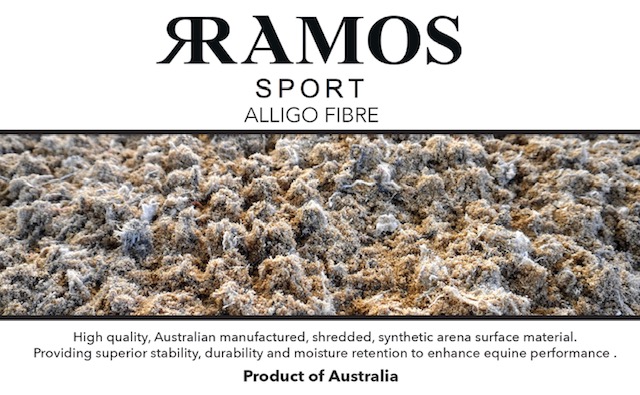
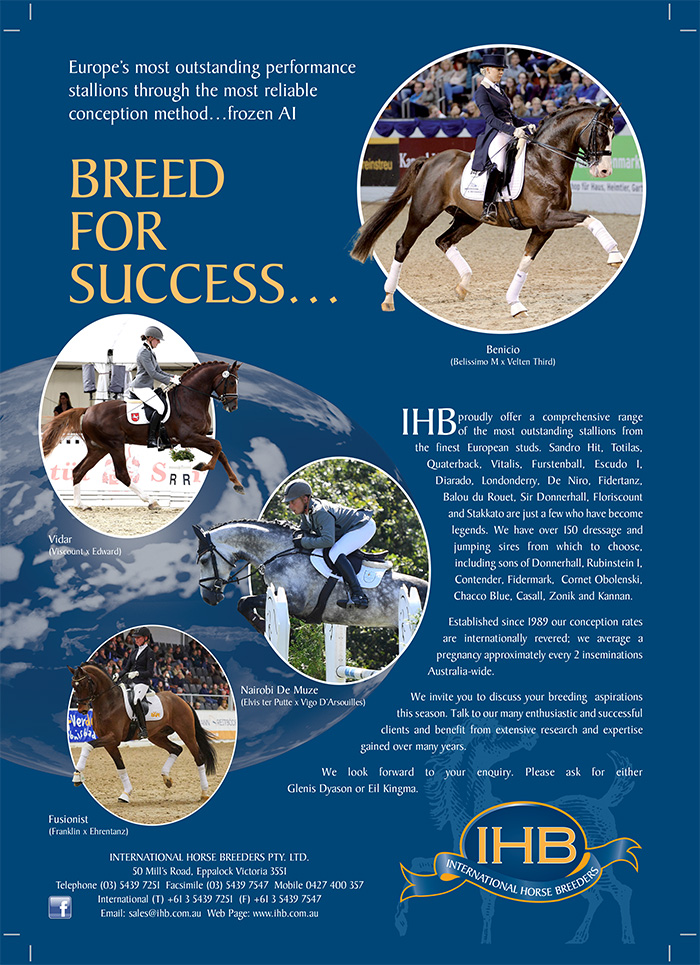
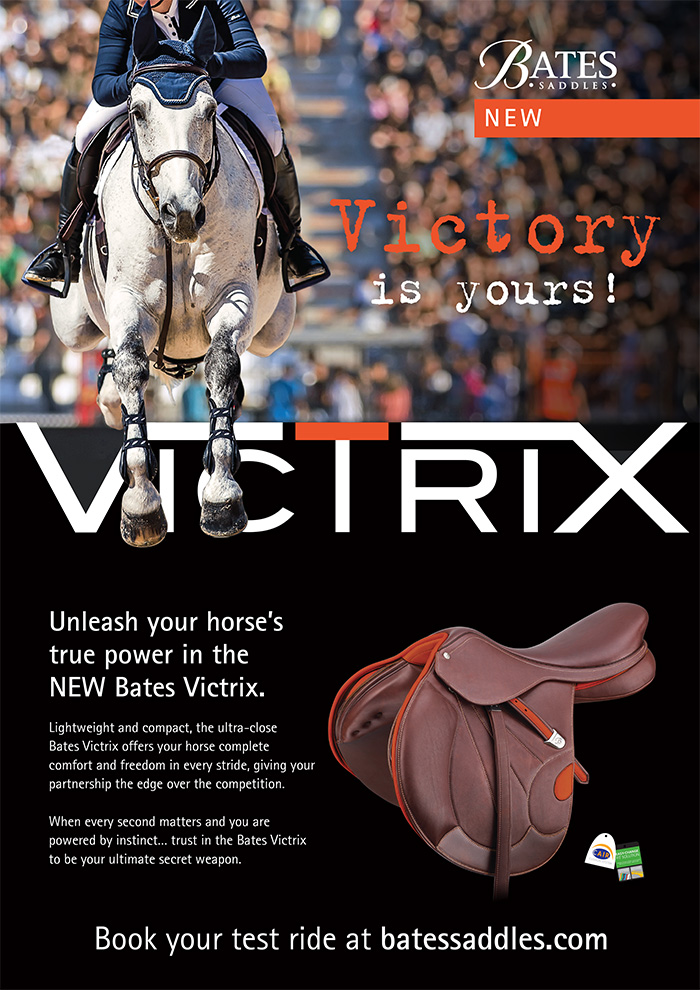
Fantastic! Only one complaint – too short! Beautifully written. Some more of the same please.